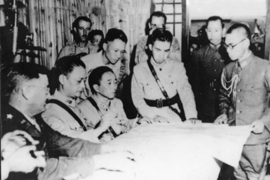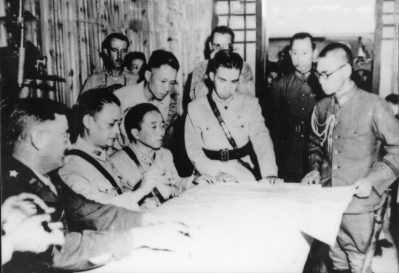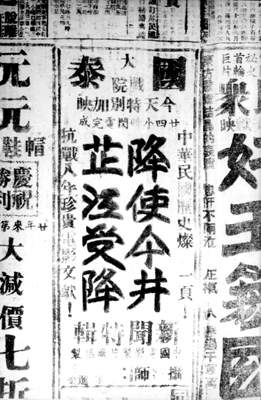City of Zhijiang site of Japan's unconditional surrender

 0 Comment(s)
0 Comment(s) Print
Print E-mail CNTV, September 2, 2014
E-mail CNTV, September 2, 2014
Many people are unaware of just when and where Japan's surrender ceremony took place. In fact, the whole process of surrender took 52 hours and it all happened in a city in central China's Hunan province.
 |
|
Zhijiang City in central China, a special place for Chinese people. It was the site of the last battle between the Chinese army and invading Japanese troops. It's also the place where Japanese representatives signed a surrender memorandum, acknowledging defeat. |
Zhijiang City in central China, a special place for Chinese people. It was the site of the last battle between the Chinese army and invading Japanese troops. It's also the place where Japanese representatives signed a surrender memorandum, acknowledging defeat.
Archival footage by a US journalist recorded the whole process.
11:15 a.m. on August 21st, 1945, Japanese Major General Takeo Imai, together with a delegation of eight people, arrived at the Zhijiang Airport. The convoy circled the airport with white flags on their cars. And then directly headed to the surrender site. Then, only four of them were allowed to enter the site, including Takeo Imai.
"The surrender site was filled with countless people, both in and outside. Everyone at the site wanted to witness the historic moment of Japan's surrender. This room is where history took place," said Memorial Hall for Japan's Surrender curator Wu Jianhong.
|
|
|
Zhijiang City in central China, a special place for Chinese people. It was the site of the last battle between the Chinese army and invading Japanese troops. It's also the place where Japanese representatives signed a surrender memorandum, acknowledging defeat. |
Xiao Yisu, a Chinese Army Chief of Staff, hosted the surrender ceremony. The ceremony took one hour to complete. Japan's delegate for surrender, Takeo Imai, accepted the detailed memorandum.
"Right in the middle of more the 100 people at the surrender site, only the Japanese Representative was incessantly wiping his sweat," Wu said.
The nervous representative was Japanese infantry advisor Yoshio Hashijima. He had to answer questions by the Chinese side, and present Japan's military deployment map to China. But even though the ceremony concluded, the surrender representative, Takeo Imai,'s mission had not ended.
Over the following two days, he had to receive surrender instructions from the Chinese side. At 1:50 p.m. on August 23rd, he accepted instructions by Chinese general He Yingqin, detailing the articles of surrender.
The 52-hour ceremony finalized the requirements of the surrender to the more than one million Japanese soldiers in China. And only after the surrender at Zhijiang, Chinese armies nationwide accepted Japan's surrender.







Go to Forum >>0 Comment(s)